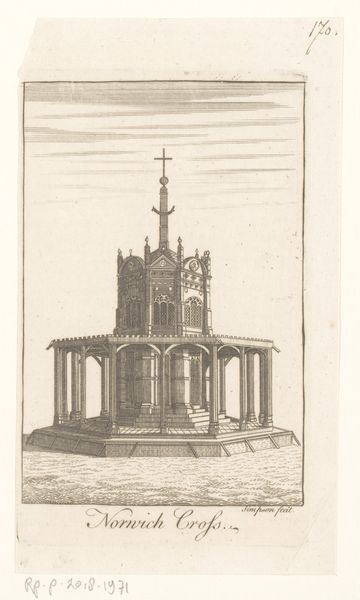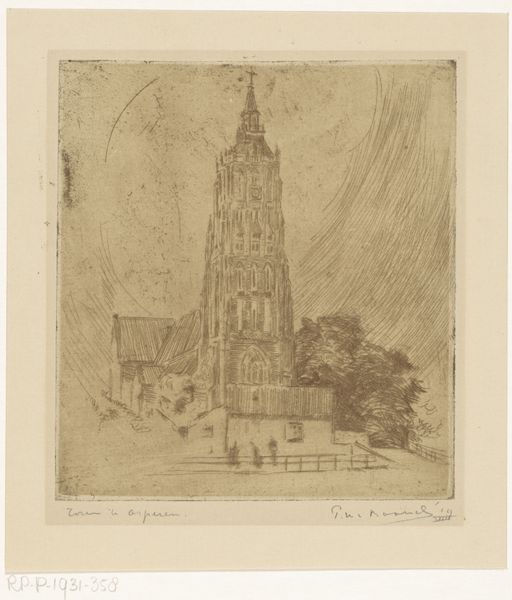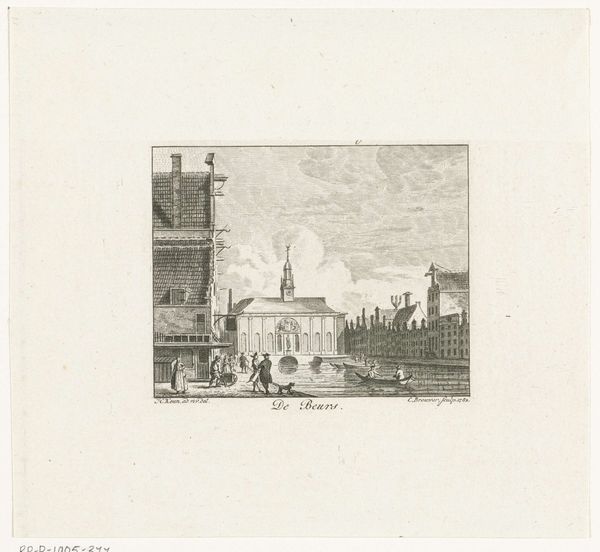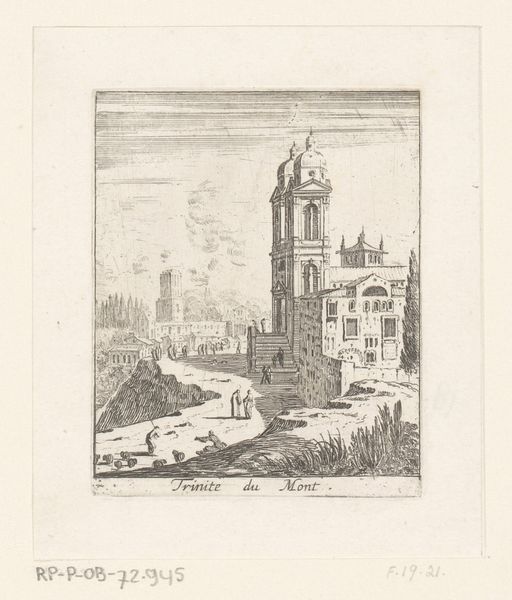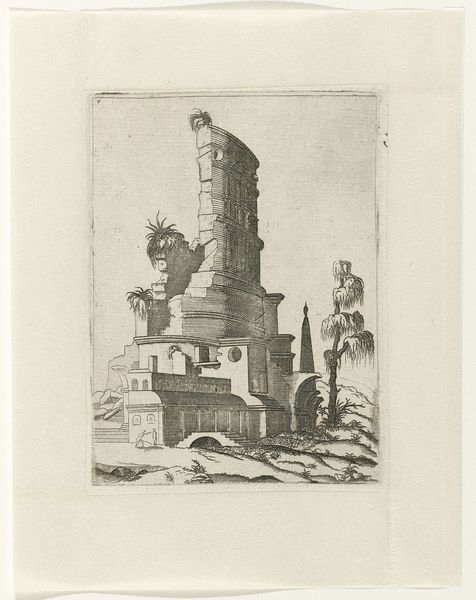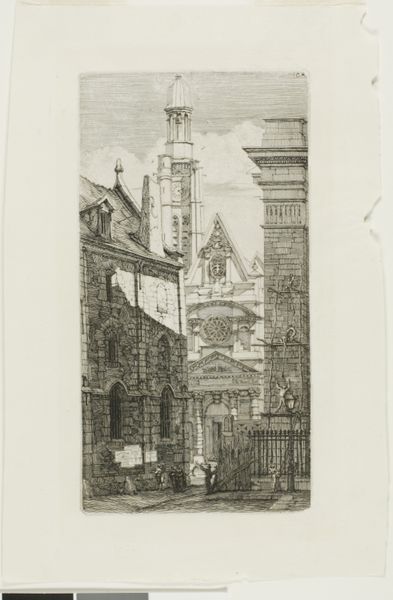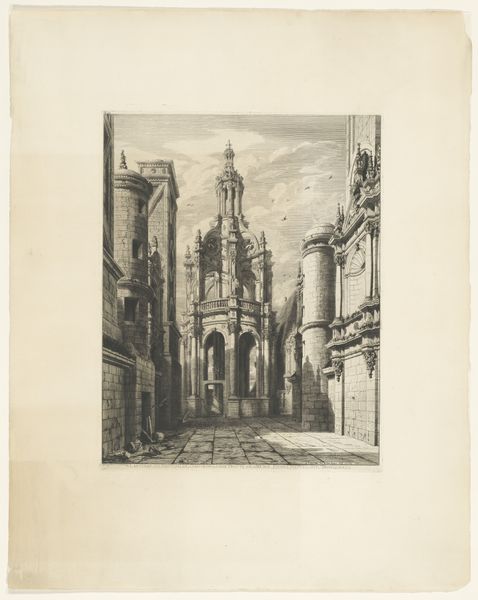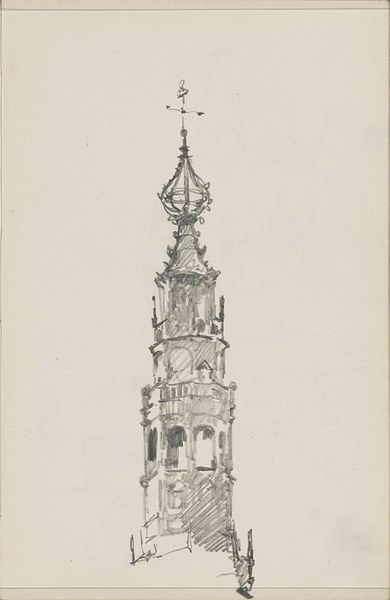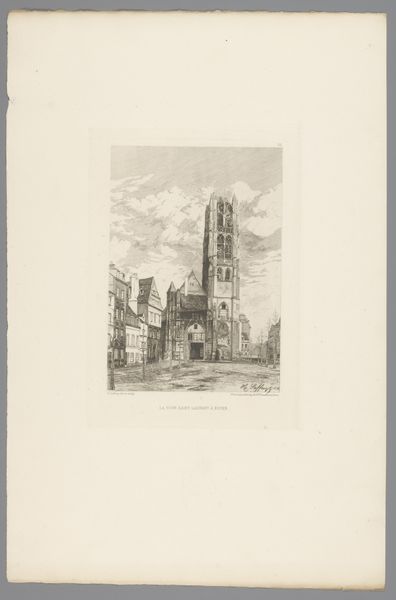
print, etching, architecture
# print
#
etching
#
old engraving style
#
landscape
#
etching
#
11_renaissance
#
cityscape
#
architecture
Dimensions: height 180 mm, width 135 mm
Copyright: Rijks Museum: Open Domain
Curator: Allow me to introduce you to Lambertus Suavius's "Hoge ronde toren," or "Tall Round Tower," an etching created around 1560. Editor: My initial reaction is that this feels very... architectural, but with a subtle melancholy. The ruined structures juxtaposed with the soaring tower evoke a sense of time and transition, almost like a memento mori. Curator: That's an interesting take. I see it as Suavius documenting the changing urban landscape of the 16th century, especially with the Italian influence during the Renaissance shaping Northern European cityscapes. The etching itself reflects the popular interest of the period, highlighting classical forms within emerging modern environments. Editor: Absolutely, but it is the tension between that which is established—the classic, even—and that which is decaying or has decayed, that interests me most. Note how the tall round tower challenges the assumptions that a Renaissance urban landscape would be organized strictly through Euclidean logic. There’s almost a fantastical quality embedded there. It disrupts notions of an idyllic past and an ordered future. Curator: Indeed, we can also contextualize this within the tradition of architectural prints, used as both documentation and aspirational designs. Suavius's choices signal to the viewers the artist's intellectual associations with classicism, filtered through a personal, almost inventive, lens. He is presenting us not only with a building but with an idea about building. Editor: And ideas, inevitably, possess political valence. How much authority—or power—do we invest in this singular, and slightly alien, high round tower versus that of the ruined buildings? Does this power derive only from the architect's individual vision? Curator: By situating it in relation to what existed before it, the print challenges any single source of architectural authority. Consider its function. Towers at this point in history represented the rise of commercial interests as much as or more than the interests of religion. Editor: A compelling argument, considering the interplay between commerce, decay, and what is considered “modernity.” Looking closer, I think that by capturing this urban dialogue, the artwork provokes more questions than it resolves. Curator: Precisely. Ultimately, Suavius's "Hoge ronde toren" reminds us that our interpretations are continuously shaped by context and the present. Editor: Agreed. The piece is a striking prompt to interrogate how social dynamics shape our perceptions of our shared environment.
Comments
No comments
Be the first to comment and join the conversation on the ultimate creative platform.
